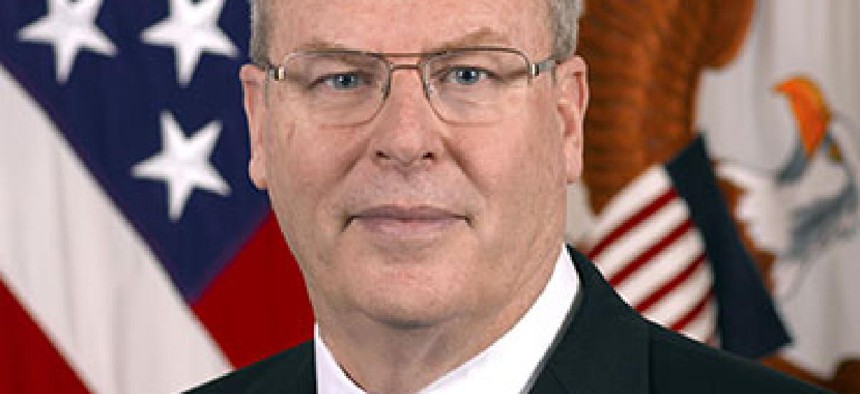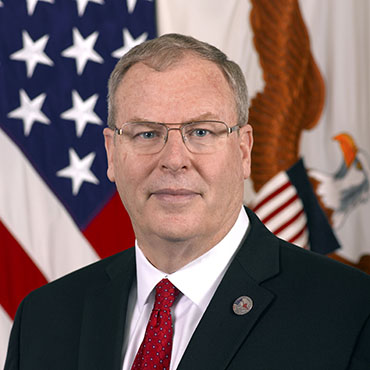Officials: DOD must adapt to multi-domain warfare model

Top officials and generals argue the era of AirLand warfare is over and DOD needs to focus on a multi-domain approach that incorporates cyber, electronic warfare and other technological changes.

Deputy Secretary of Defense Robert O. Work
The U.S. is at an inflection point in warfare and the threats the nation faces, and officials warn the military is not yet aligned to meet current and future cyber, electronic warfare and other threats.
"The United States has enjoyed a remarkable run of conventional dominance at both the tactical and operational levels of war," Deputy Secretary of Defense Robert Work said at the Association of the U.S. Army conference in Washington. "And during this period we have had generally unimpeded freedom of action -- access on the land, in the air, on the sea."
That is changing, Work said.
Competitors like Russia are investing heavily and developing cyber and electronic capabilities in addition to conventional capabilities that threaten America's operational and technological overmatch, he explained.
"Our largest state adversaries have achieved rough parity in battle networks and guided munitions," he said. "This will make movement to the theater and movement within the theater more difficult."
"They are fracturing our way of war by using other domains," said Gen. David Perkins, commanding general United States Army Training and Doctrine Command. "We've seen them be able to take down large land forces by a combination of electronic warfare, cyber, autonomous systems, drones -- not with a close-in battle."
"We don't believe we're organized, trained, or equipped to meet the demands of a future operational contest against a peer competitor," said Gen Robert B. Neller, commandant of the Marine Corps.
He said that's in large part because the U.S. has been on a war footing for the last 15 years without the downtime to reflect on doctrine and adapt to the current landscape. That needs to change quickly, he said, because the U.S. is now in cyber combat on a daily basis.
"What we have to come up with is a very difficult to fracture concept," said Perkins. The new focus is "multi-domain battle," which he described as a strategic concept designed to drive change from the past model of AirLand battle.
"If I can create an opening with cyber, then I can bring in the air domain, and then we've got the maritime and then the land," said Perkins. "That's a whole other order of complication for our enemy. That's a lot of dilemmas for them to solve."
But he said the current military structure isn't organized around that approach.
"We don't necessarily train that way… our equipment doesn't necessarily operate that way; that's why concepts are important to drive change," he said.
Perkins said that of any domain, cyber is the most joint in nature because it is ubiquitous across the battlefield.
"You don't have some of these preset ways on dealing with it," he said. "We haven't really even established all the force structure, even within the army, so there is still a level of malleability with it."
Gen. David L. Goldfein, chief of staff of the Air Force, said that each service is currently producing cyber talent and then distributing it into three different bins. The first, he said, is at the combatant commander level.
"That cyber talent has got to understand the operational war plans, challenges that commander faces and to tie the operational commander back into the capabilities that exist both defensively and offensively," he said.
The second bin, he said, is each of the individual services. For example, he said that the Air Force needs the cyber capability to carry out the traditional air mission through the cyber domain.
The third bin, Goldfein said, is the National Security Agency and U.S. Cyber Command, which have the authorities to use the distributed capabilities.
"We're looking to ensure that we have the sweet spot and we've got the talent aligned with where the authorities reside and we're able to lift and shift across those three bins -- to defend the networks and domains, and also do the business of NSA and Cybercom," he said.
Work said that while technology is changing and at the heart of future operations, "the Third Offset is not about technology per se, it is about the operational concepts and organization constructs that will shape the way we use technology."
He said that one of the changes going forward will be the increasing use of artificial intelligence and automation. Those technologies will play critical roles in things like cyber, electronic warfare and guided missile attacks, Work predicted.
"In each of those three we will have to delegate authority to machines to make the final decisions," he said. "This is not about Skynet and Terminator. This is about Ironman... this is machines helping humans achieve the effects."
NEXT STORY: Air Force cybersecurity campaign takes off


